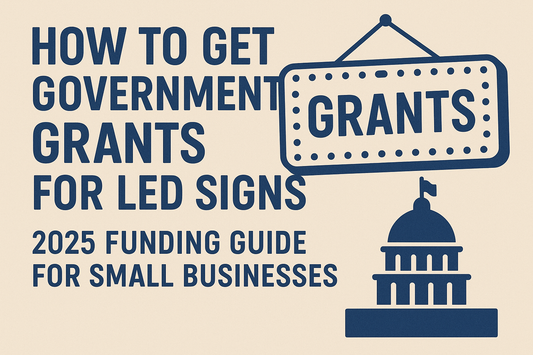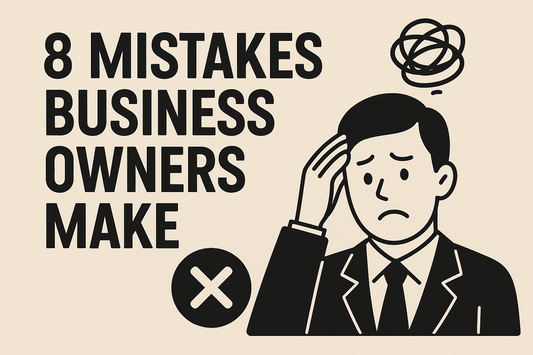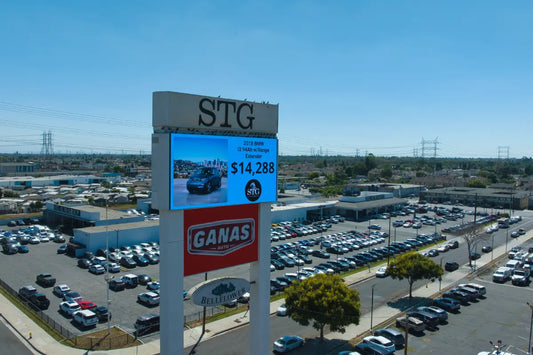How to Get a Sign Permit for Your LED Display: A Complete Guide
Installing an outdoor LED sign for your business is an excellent investment that can dramatically increase visibility and drive more customers to your location. However, before you can start reaping the benefits of digital advertising, there's one crucial step you can't skip: obtaining the proper sign permit from your local authorities.
Navigating the permit process might seem daunting, but with the right information and preparation, you can streamline the approval process and get your LED sign up and running quickly. This comprehensive guide walks you through everything you need to know about securing a sign permit for your outdoor LED display.
Why Do You Need a Sign Permit?
Sign permits exist to ensure that outdoor advertising displays comply with local zoning laws, safety regulations, and community standards. These regulations help maintain:
- Public Safety: Ensuring signs don't obstruct traffic views or create driving hazards
- Aesthetic Standards: Maintaining the visual character of neighborhoods and business districts
- Structural Safety: Verifying that signs are properly engineered and won't pose risks to pedestrians or property
- Electrical Compliance: Ensuring LED displays meet electrical codes and safety standards
Most municipalities require permits for any permanent outdoor signage, and LED signs are no exception. Installing a sign without proper permits can result in fines, forced removal, and costly delays to your business operations.
Understanding Local Sign Ordinances
Before diving into the permit application process, it's essential to understand your local sign ordinances. These regulations vary significantly between cities, counties, and states, so what's allowed in one area may be prohibited in another.
Key Factors Regulated by Sign Ordinances:
Size Restrictions
- Maximum sign dimensions (height, width, total square footage)
- Setback requirements from property lines and roadways
- Height limitations based on zoning districts
Location Requirements
- Permitted zones for digital signage
- Distance requirements from residential areas
- Proximity restrictions to schools, churches, or hospitals
Technical Specifications
- Brightness limitations (measured in nits or foot-lamberts)
- Message change frequency restrictions
- Operating hour limitations
Design Standards
- Color restrictions
- Animation and video content rules
- Content change timing requirements
Step-by-Step Sign Permit Process
Step 1: Research Local Requirements
Start by contacting your local planning department or building permit office to obtain specific requirements for your area. Many municipalities have their sign ordinances available online, but speaking directly with a permit specialist can help clarify any questions.
Key Questions to Ask:
- What type of permit is required for LED signs?
- What are the size and height restrictions for my zoning district?
- Are there special requirements for digital or electronic signs?
- What documentation is needed for the application?
- What are the associated fees and processing times?
Step 2: Site Assessment and Planning
Before submitting your permit application, conduct a thorough assessment of your proposed sign location. Consider factors such as:
- Visibility: Ensure the sign will be clearly visible to your target audience
- Safety: Verify the location won't obstruct traffic sightlines or create hazards
- Utilities: Plan for electrical connections and any required utility work
- Property Lines: Confirm the sign will be within your property boundaries and meet setback requirements
Step 3: Gather Required Documentation
Depending on your local requirements, you may need some or all of the following supporting documents:
Site Plans and Surveys (required in some areas)
- Property survey showing exact sign placement
- Site plan indicating setbacks from property lines
- Elevation drawings showing sign height relative to surrounding structures
Technical Specifications (complexity varies by location)
- Detailed drawings of the sign structure and dimensions
- Electrical plans and load calculations (for certain installations)
- Foundation and engineering drawings (typically for larger signs)
- LED display specifications including brightness levels
Additional Documentation (varies by municipality)
- Proof of property ownership or landlord authorization
- Business license
- Contractor licenses (if using professional installation)
- Environmental impact assessments (for larger installations in some areas)
Step 4: Submit Your Application
Once you've gathered all required documentation, submit your complete permit application along with the required fees. Incomplete applications often result in delays, so double-check that you've included everything on the municipality's checklist.
Application Tips:
- Submit applications well in advance of your desired installation date
- Keep copies of all submitted documents
- Follow up with the permit office to track application status
- Be prepared to respond to any requests for additional information
Step 5: Plan Review and Approval Process
After submission, your application will typically undergo review by various departments, though the complexity varies significantly by location:
Planning Department Review (most common)
- Zoning compliance verification
- Design standard compliance
- Community impact assessment
Building Department Review (for structural installations)
- Structural safety evaluation
- Foundation requirements (if applicable)
- Construction code compliance
Electrical Department Review (in some jurisdictions)
- Electrical system safety
- Code compliance verification
- Utility coordination requirements
The review process can range from a simple administrative approval in smaller towns to complex multi-department reviews in larger cities, typically taking anywhere from 1-8 weeks depending on your local government's requirements and workload.
Common Permit Challenges and Solutions
Challenge: Size Restrictions
Problem: Your desired sign exceeds local size limitations.
Solution: Consider alternative designs that maximize impact within permitted dimensions, or explore variance application processes for exceptional circumstances.
Challenge: Brightness Concerns
Problem: Local ordinances limit LED display brightness levels.
Solution: Work with your LED sign provider to specify displays with automatic brightness controls that adjust to ambient light conditions and comply with local requirements.
Challenge: Zoning Conflicts
Problem: Your business location is in a zone that restricts digital signage.
Solution: Research possible zoning variances or special use permits that might allow LED signs with specific conditions.
Challenge: Neighborhood Opposition
Problem: Community members object to digital signage installations.
Solution: Engage with neighbors early in the process, address concerns proactively, and emphasize how professional LED displays can enhance the business district.
Working with Professional LED Sign Companies
Partnering with an experienced LED sign company can significantly simplify the permit process. Professional providers offer valuable services including:
- Permit Application Assistance: Help with documentation preparation and submission
- Local Expertise: Knowledge of area-specific requirements and common approval challenges
- Technical Compliance: Ensuring your sign meets all technical and safety standards
- Project Management: Coordinating the entire process from permit to installation
BestLEDSigns.com's Permit Guarantee
At BestLEDSigns.com, we understand that securing the proper permits is crucial to your project's success. That's why we don't sell a sign unless we can secure the necessary permits first. This guarantee protects your investment and ensures you won't face costly delays or complications.
Our Digital Signage Experts Provide:
- Free Permit Consultation: Our specialists review your local requirements before you commit
- Complete Permit Management: We handle the entire application process from start to finish
- Local Compliance Expertise: Deep knowledge of regulations across our service areas
- Risk-Free Approach: No sale until permits are secured, giving you complete peace of mind
Why This Matters: Many companies will gladly take your money and leave you to figure out permits on your own. Our approach ensures you're working with a partner who's invested in your success from day one.
When choosing an LED sign provider, look for companies with:
- Proven track record with LED installations
- Experience with permit applications
- Professional engineering and installation capabilities
- Comprehensive warranty and support services
- Permit guarantee policies that protect your investment
Timeline and Cost Considerations
Typical Permit Timeline:
- Application Preparation: 1-2 weeks
- Review Process: 2-8 weeks
- Approval and Final Documentation: 1-2 weeks
- Total Process: 4-12 weeks
Common Permit Costs:
- Application Fees: $100-$1,000 depending on sign size and local rates
- Plan Review Fees: $200-$2,000 for complex installations
- Inspection Fees: $100-$500 for required inspections
- Additional Costs: Engineering reports, surveys, legal fees (if needed)
Best Practices for Permit Success
Do Your Homework
Research thoroughly and understand all requirements before starting the application process. Contact multiple departments if necessary to get complete information.
Plan for the Long Term
Consider future business needs and growth when sizing your sign. It's often more cost-effective to install a larger sign initially than to upgrade later.
Maintain Good Relationships
Build positive relationships with local permit officials. Professional, courteous interactions can help smooth the approval process.
Be Patient but Persistent
Government processes take time, but don't hesitate to follow up appropriately on application status and address any concerns promptly.
After Permit Approval
Once your sign permit is approved, you may need to:
- Schedule Required Inspections: Some areas require inspections at various installation stages
- Coordinate Installation: Work with your LED sign provider to schedule professional installation
- Final Compliance Check: Ensure the completed installation matches approved plans
- Obtain Final Approvals: Complete any final paperwork and obtain certificates of occupancy if required in your area
Conclusion
Obtaining a sign permit for your LED display doesn't have to be overwhelming. With proper planning, thorough research, and the right professional support, you can navigate the process successfully and get your new digital sign operational quickly.
Remember that investing time in the permit process upfront protects your business investment and ensures your LED sign will operate legally for years to come. The enhanced visibility and customer attraction that comes with professional LED signage makes the permit process well worth the effort.
Partner with Permit Experts
Ready to start your LED sign project without the permit headaches? Our digital signage experts at BestLEDSigns.com are ready to assist you with every aspect of the permitting process. We take the guesswork out of compliance and handle all the complex paperwork so you can focus on running your business.
Schedule a free consultation with one of our permit specialists who will:
- Review your local requirements at no cost
- Assess your proposed sign location for compliance
- Provide a clear roadmap to permit approval
- Handle the entire application process for you
Remember: We don't sell a sign unless we can secure your permits first. This guarantee means you can move forward with confidence, knowing your investment is protected.
Our experienced team understands local permit requirements and can help ensure your project proceeds smoothly from concept to completion. Get your free quote and permit consultation and discover how the right LED sign can transform your business visibility.
Frequently Asked Questions About LED Sign Permits
Do I need a permit for an LED sign?
Yes, most municipalities require permits for outdoor LED signs. The specific requirements vary by location, but permanent outdoor digital displays typically need approval from local planning or building departments before installation.
How much does a sign permit cost?
Sign permit costs vary widely by location and sign size. Typical fees range from $100-$1,000 for application fees, with additional costs for plan reviews ($200-$2,000) and inspections ($100-$500). Contact your local permit office for specific pricing.
How long does it take to get a sign permit?
The permit process typically takes 4-12 weeks total, including 1-2 weeks for application preparation, 2-8 weeks for review, and 1-2 weeks for final approval. Complex projects or busy permit offices may take longer.
Can I install an LED sign without a permit?
No, installing an LED sign without proper permits can result in fines, forced removal, and legal complications. Always obtain required permits before installation to protect your investment and ensure compliance.
What happens if my sign permit is denied?
If denied, you can typically revise your application to address concerns, apply for a variance, or appeal the decision. Working with experienced LED sign professionals can help avoid common denial reasons and improve approval chances.
Do LED signs require special electrical permits?
Some jurisdictions require separate electrical permits for LED signs, especially for larger installations or complex electrical work. Your LED sign provider should coordinate all necessary permits including electrical approvals.
Are there size limits for LED signs?
Yes, most areas have size restrictions based on zoning districts. Common limits range from 32-200 square feet for business signs, but regulations vary significantly by location and property type.
Can I get a permit for a mobile LED sign?
Mobile LED signs often have different regulations than permanent installations. Some areas treat them as vehicles rather than signs, while others prohibit them entirely. Check local ordinances for mobile advertising regulations.






